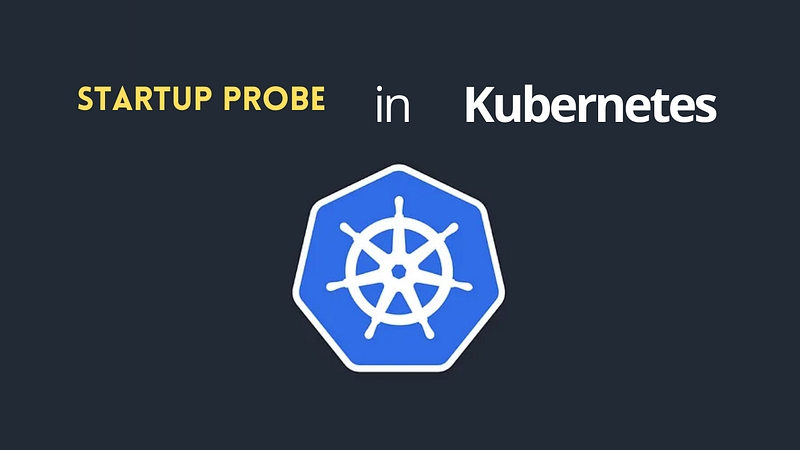Understanding Kubernetes: Part 33 Startup Probe

📢 If you’ve been following our Kubernetes series 2025, welcome back! For new readers, check out Part 32 Vertical Pod Autoscaler (VPA)
What is a Startup Probe in Kubernetes?
A Startup Probe in Kubernetes is a type of probe designed to determine if a container within a pod has started successfully. It is useful for applications that have long startup times or require significant initialization before they are ready to handle requests. Unlike the Liveness Probe or Readiness Probe, which are designed to check the health and readiness of a pod once it is already running, the Startup Probe helps ensure that Kubernetes doesn’t prematurely consider a container as unhealthy during the startup process.
If the startup probe fails, Kubernetes will kill and restart the pod. However, if the startup probe is successful, Kubernetes assumes that the container is running properly and will then rely on the readiness probe (if configured) to check whether the pod is ready to handle traffic.
For example:
Consider an application that needs to load a large dataset into memory at startup. This could take several minutes, and during this time, the application is not ready to accept traffic. If you only configure a liveness probe, Kubernetes might kill the pod before it has finished starting because it doesn’t know that the delay is expected. A startup probe can be used to give the container enough time to start up without being prematurely killed.
Startup Probe Capabilities:
Types of Checks: Like the liveness and readiness probes, startup probes can use HTTP requests, TCP socket connections, or execute commands to check the startup state of the container.
HTTP Check: Sends an HTTP request to a specified path and expects a successful response (e.g., 200 OK).
TCP Check: Attempts to establish a TCP connection on a specified port.
Exec Check: Executes a command inside the container. If the command succeeds (exit code 0), the container is considered started.
Customizability: You can configure the probe with parameters such as
initialDelaySeconds,periodSeconds,timeoutSeconds,failureThreshold, andsuccessThreshold.
In my previous role:
As a Senior DevOps Engineer, I used startup probes for microservices that required a significant initialization time. For example, one of our services was a data processing application that loaded large datasets into memory at startup. We used a startup probe to avoid premature restarts. This allowed the container to finish its initialization before Kubernetes checked its health using liveness or readiness probes. As a result, the service started smoothly without interruptions.
Here’s a simple YAML for a Startup Probe:
HTTP Startup Probe:
apiVersion: v1
kind: Pod
metadata:
name: data-processing-app
spec:
containers:
- name: data-container
image: data-processing-app:latest
startupProbe:
httpGet:
path: /startup
port: 8080
initialDelaySeconds: 15
periodSeconds: 10
timeoutSeconds: 5
failureThreshold: 5In this example:
The
startupProbesends an HTTP GET request to the/startupendpoint on port8080of thedata-container.The probe starts checking after an initial delay of 15 seconds (
initialDelaySeconds), then continues every 10 seconds (periodSeconds).If the probe takes longer than 5 seconds to respond, it will fail (
timeoutSeconds).If the probe fails 5 consecutive times (
failureThreshold), Kubernetes will restart the pod.
TCP Startup Probe:
apiVersion: v1
kind: Pod
metadata:
name: slow-start-app
spec:
containers:
- name: slow-container
image: slow-start-app:latest
startupProbe:
tcpSocket:
port: 3306
initialDelaySeconds: 20
periodSeconds: 15In this example:
The
startupProbeattempts to establish a TCP connection on port3306to check if the database service has started.The probe checks every 15 seconds, starting after an initial delay of 20 seconds.
Key Differences between Startup, Liveness, and Readiness Probes:
Startup Probe: Designed for long startup times to prevent Kubernetes from killing a container before it’s fully initialized.
Liveness Probe: Checks if a pod is running and healthy; if it fails, Kubernetes will restart the pod.
Readiness Probe: Checks if a pod is ready to handle traffic; if it fails, Kubernetes stops routing traffic to the pod.
The Startup Probe ensures that your containers are not prematurely terminated during startup, while liveness and readiness probes ensure the ongoing health and traffic routing of your pods.
🚀 Ready to Master Kubernetes?
Take your Kubernetes journey to the next level with the Master Kubernetes: Zero to Hero course! 🌟 Whether you’re a beginner or aiming to sharpen your skills, this hands-on course covers:
✅ Kubernetes Basics — Grasp essential concepts like nodes, pods, and services. ✅ Advanced Scaling — Learn HPA, VPA, and resource optimization. ✅ Monitoring Tools — Master Prometheus, Grafana, and AlertManager. ✅ Real-World Scenarios — Build production-ready Kubernetes setups.
🔥 Flash Sale: Buy Kubernetes Course, Get Terraform FREE! Limited Time Offer!
🔥 Start Learning Now: [Join the Master Kubernetes Course + FREE Access to Terraform Course](https://cloudops0.gumroad.com/l/k8s)
Don’t miss your chance to become a Kubernetes expert! 💻✨
🚀 Stay ahead in DevOps and SRE! 🔔 Subscribe now and never miss a beat on Kubernetes and more. 🌟
🚀 Master Terraform: Infrastructure as Code
🔥 Start Learning Now: Join the Master Terraform Course
Apply Code DEVOPS20 for 20% OFF!
Last updated